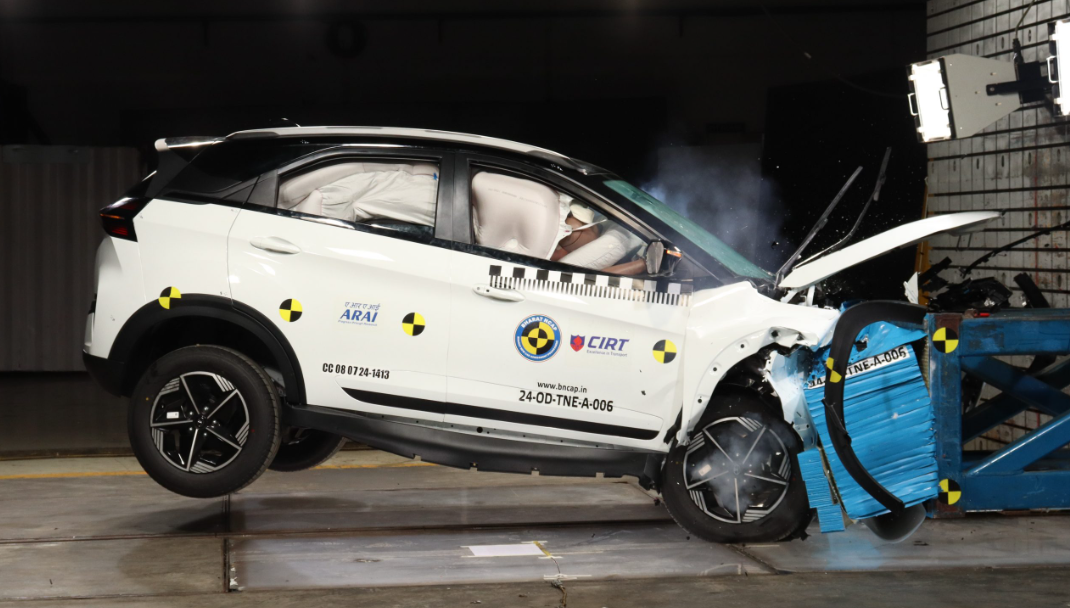 To be eligible for assessment under Bharat NCAP 2.0, vehicles must come equipped with ESC and side head protection devices such as curtain airbags as standard.
To be eligible for assessment under Bharat NCAP 2.0, vehicles must come equipped with ESC and side head protection devices such as curtain airbags as standard.New Delhi: The Ministry of Road Transport and Highways (MoRTH) has proposed a major overhaul of the Bharat New Car Assessment Programme (Bharat NCAP), expanding India’s passenger vehicle safety rating framework to cover a wider spectrum of active, passive and post-crash safety technologies. The draft notification for AIS-197 Revision 1, or Bharat NCAP 2.0, was released on Friday.
Under the revised framework, a vehicle’s star rating will be based on its combined performance across five assessment areas — Crash Protection, Vulnerable Road User (VRU) Protection, Safe Driving, Accident Avoidance and Post-Crash Safety. This marks a shift from the existing system, which evaluates models primarily on Adult Occupant Protection (AOP), Child Occupant Protection (COP) and safety assist features.
The government has proposed rolling out the updated norms from October 2027, when the current Bharat NCAP guidelines expire on 20 September 2027.
According to the draft, crash performance will continue to form the largest share of the score, contributing 55 per cent to the total. However, manufacturers will no longer be able to rely on crash-worthiness alone to secure high ratings, with VRU Protection allotted 20 per cent weightage, Safe Driving Technologies and Accident Avoidance Systems 10 per cent each, and Post-Crash Safety the remaining 5 per cent.
The draft notes that “while a safety rating can never fully capture the complexity of the real world, the vehicle improvements brought by high safety standards have the potential to benefit consumers and society as a whole.”
Five mandatory crash tests proposed
Bharat NCAP 2.0 expands the number of mandatory crash tests from three to five. These include a 64 kmph offset frontal impact, a 50 kmph full-width frontal impact, a 50 kmph lateral mobile barrier test, a 32 kmph oblique pole side impact and a 50 kmph mobile rigid rear impact test. Injury assessments for adults and children will be carried out using advanced crash-test dummies.
Focus on pedestrians, two-wheelers
With a 20 per cent weightage, the draft gives significant emphasis to the safety of vulnerable road users. Mandatory tests will assess the vehicle’s front end for pedestrian leg protection and head impact mitigation for both adults and children. Optional evaluations include Autonomous Emergency Braking (AEB) responses for pedestrians and motorcyclists.
Active safety systems to play a larger role
Safe Driving Technologies — such as seat belt reminders, blind spot detection, driver drowsiness alerts, forward collision warnings, lane departure warnings and traffic sign recognition — will account for 10 per cent of the total score. Manufacturers can equip vehicles with multiple technologies, but points will be awarded for a maximum of five.
Accident Avoidance, also carrying a 10 per cent weightage, focuses primarily on Electronic Stability Control (ESC) and Autonomous Emergency Braking (AEB). ESC will be mandatory for any model to qualify for a star rating, while AEB remains voluntary but beneficial for scoring.
Post-crash protection introduced
A new 5 per cent weightage will assess a vehicle’s ability to protect occupants after a crash, including checks for fire and electrical hazards and ease of rescue. Optional features such as multi-collision braking, SOS emergency call systems and rescue sheets will add to the score.
To be eligible for assessment under Bharat NCAP 2.0, vehicles must come equipped with ESC and side head protection devices such as curtain airbags as standard.
For a five-star rating, a vehicle will need to achieve at least 70 points out of 100 between 2027 and 2029, and 80 points from 2029 to 2031.
Industry experts say the proposed changes significantly raise the safety bar for Indian passenger vehicles, while consumers will benefit from a more comprehensive and realistic rating that encompasses crash performance, accident prevention and post-incident measures.



